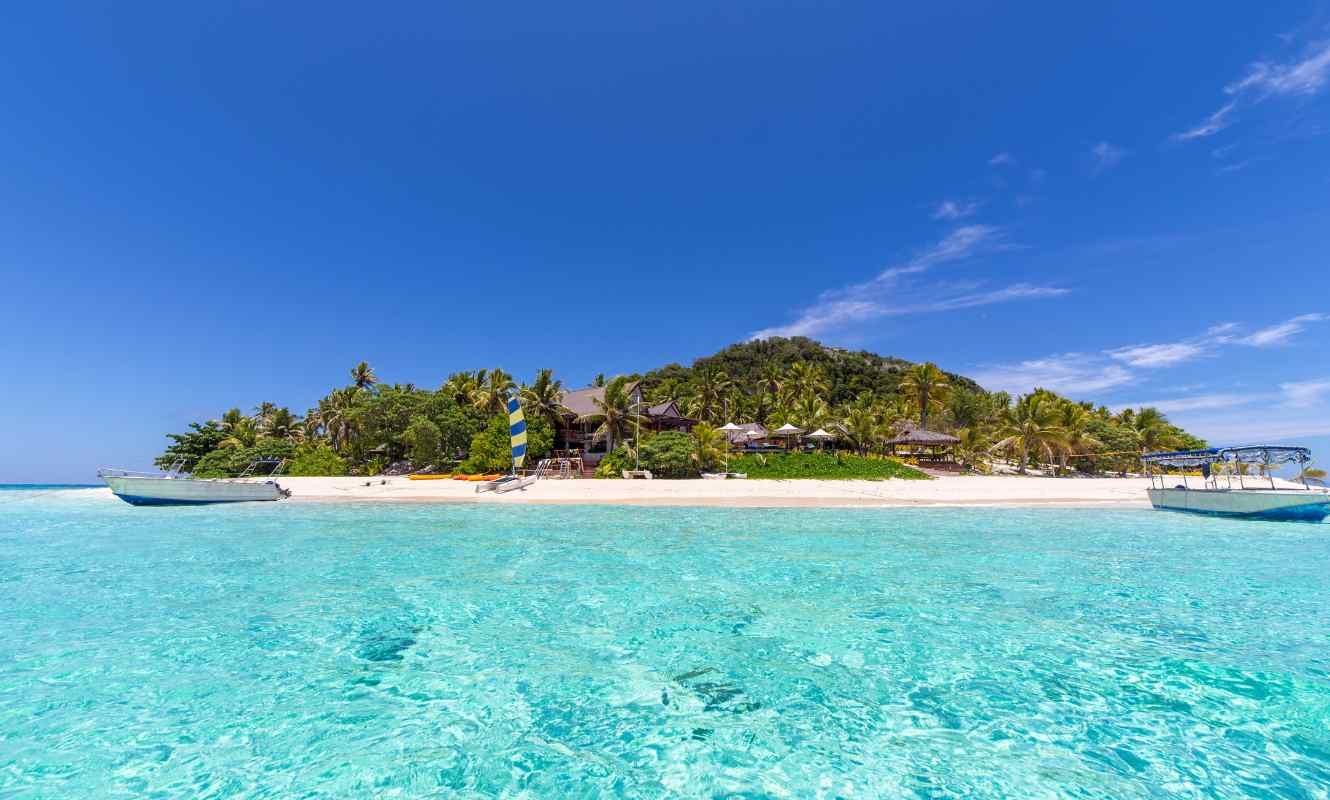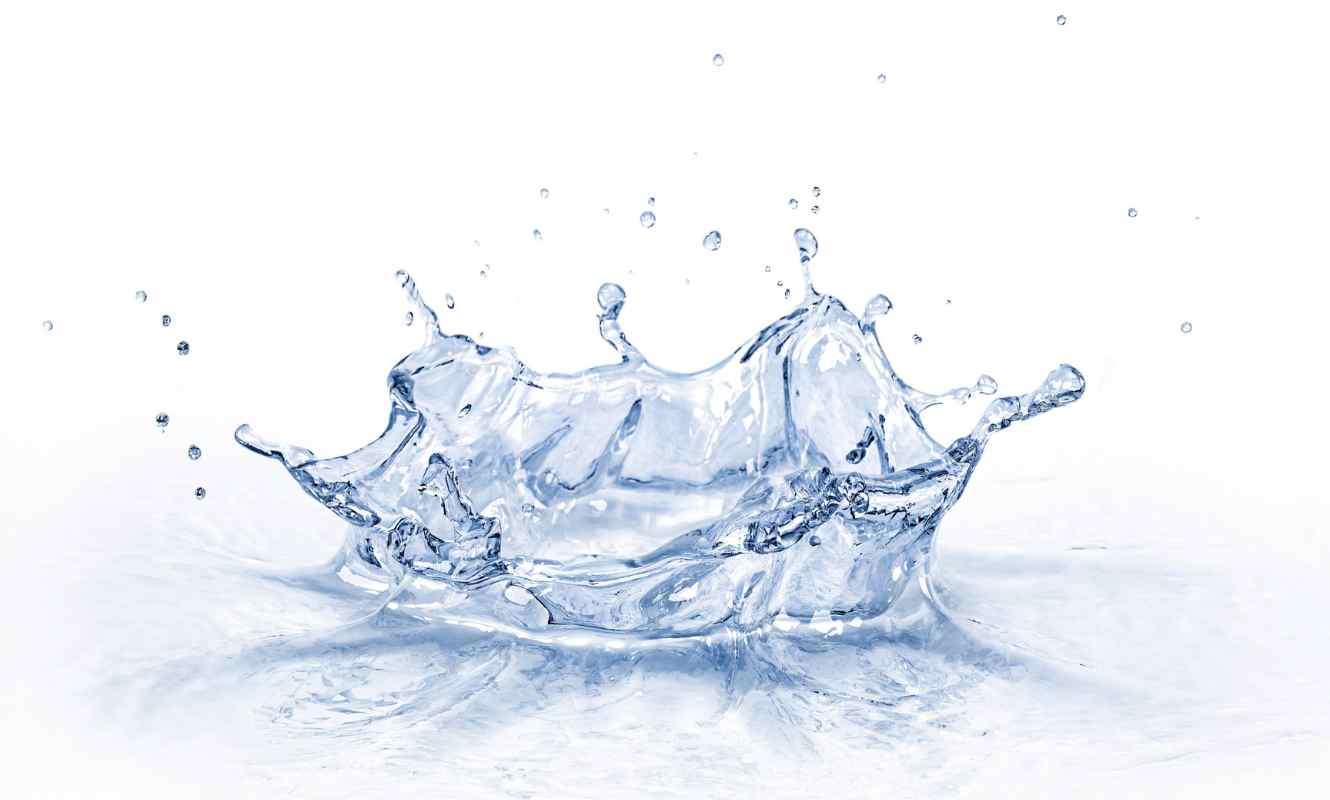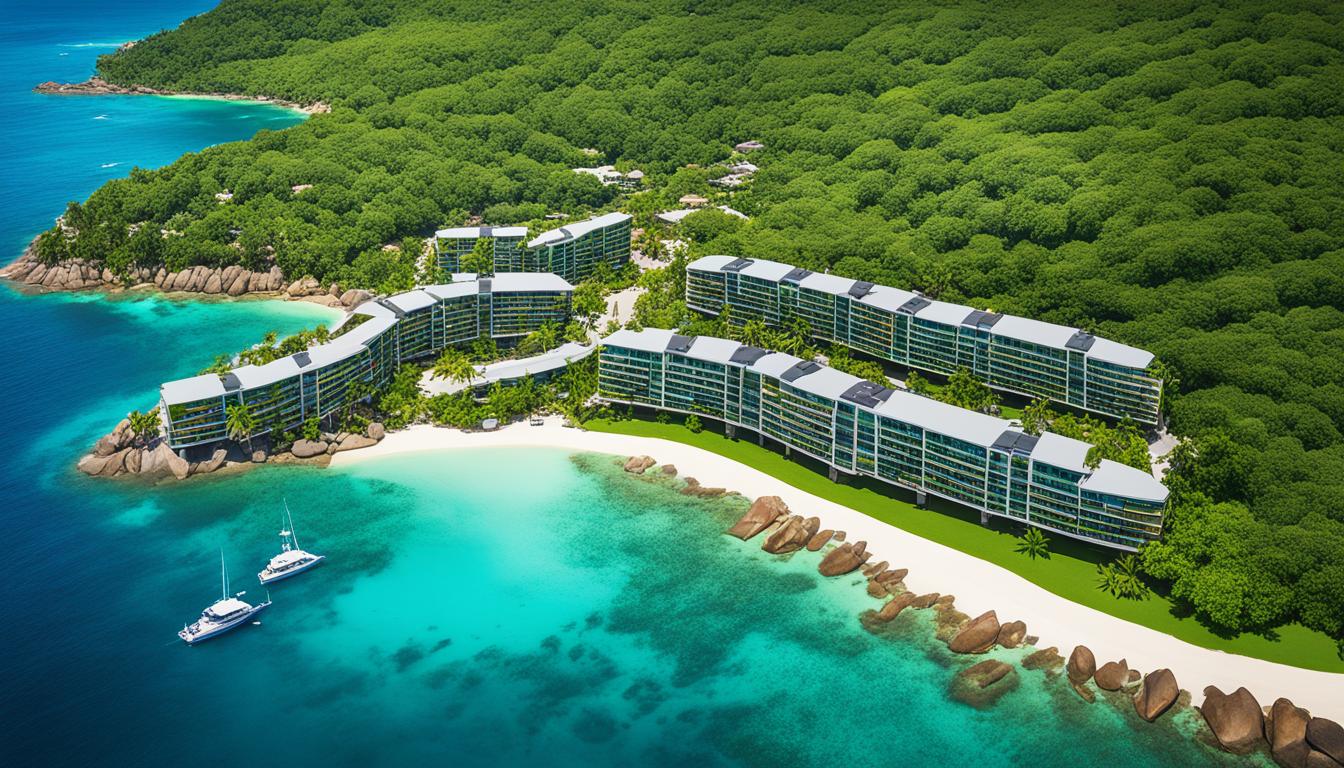Fiji Green Building History
Fiji Green Building History
Fiji has a vibrant history of embracing sustainable building practices and eco-friendly construction, making it a leader in green architecture. The country’s commitment to promoting a more sustainable future is evident in its efforts to incorporate green building practices into its construction industry.
In March 2022, the Sustainability Chapter was added to the Fiji National Building Code, providing guidance on climate mitigation, adaptation, and resilience in building design. This important addition highlights Fiji’s dedication to addressing the challenges of climate change and promoting sustainable development.
The Global Green Growth Institute (GGGI) has played a crucial role in supporting Fiji’s green building initiatives. The GGGI has organized training sessions for industry professionals and government officials, equipping them with the knowledge and skills necessary to implement sustainable building practices. These training sessions cover topics such as green passive design and strategies for climate-proof buildings.
Fiji National University has institutionalized the training material provided by the GGGI, ensuring that the knowledge and expertise gained from these sessions will continue to be accessible to industry professionals. This commitment to ongoing education and training reflects Fiji’s determination to meet the growing demand for sustainable construction practices.
Fiji’s architecture is renowned for its unique and diverse styles. The country’s resorts and villas embrace ecological sustainability by utilizing locally available materials such as reed and palm wood. Traditional village layout designs are often incorporated into residential buildings, further connecting the architecture to Fiji’s cultural heritage.
Office buildings in Fiji showcase a blend of Western architectural styles introduced during the colonial era and local architectural patterns. The influence of colonial culture can be seen in the use of British and Victorian architectural styles in some buildings. However, Fiji’s architecture maintains its distinct local style, characterized by the use of palm wood, reed wood, and communal collectives in construction.
The American Samoa Environmental Protection Agency is currently working on a groundbreaking project to construct an energy-efficient building that aims to be LEED Platinum Green-certified. This project will serve as a notable example of sustainable construction in the Pacific region, highlighting the commitment of both Fiji and its neighboring countries to building a greener future.
Key Takeaways:
- Fiji has a rich history of embracing sustainable building practices and eco-friendly construction.
- The addition of the Sustainability Chapter to the Fiji National Building Code underscores Fiji’s commitment to addressing climate change and promoting sustainable development.
- The Global Green Growth Institute has been instrumental in providing training and support for industry professionals and government officials.
- Fiji’s architecture showcases a unique blend of Western and local styles, with an emphasis on ecological sustainability and cultural heritage.
- The American Samoa Environmental Protection Agency’s LEED Platinum Green-certified project exemplifies the region’s dedication to sustainable construction.
Incorporating Sustainable Design into the Fiji National Building Code
In March 2022, the Fiji National Building Code incorporated a Sustainability Chapter, highlighting the commitment to climate mitigation, adaptation, and resilience in building design. This important addition provides guidance for architects, engineers, and contractors to incorporate sustainable practices into their projects, ensuring a greener future for Fiji’s construction industry.
The Sustainability Chapter of the Fiji National Building Code focuses on various aspects of sustainable architecture in Fiji. It emphasizes the use of environmentally friendly materials, energy-efficient design strategies, and the integration of renewable energy sources. By incorporating these principles into building design and construction, Fiji aims to reduce its carbon footprint and promote a more sustainable built environment.
With the newly updated Building Code in place, Fiji has taken significant strides towards promoting green building initiatives in the country. Architects and builders are now encouraged to adopt sustainable practices that not only benefit the environment but also enhance the comfort and wellbeing of building occupants. By following these guidelines, Fiji is setting a precedent for other nations in the Pacific region to prioritize sustainability in their construction industry.
The incorporation of sustainable design principles into the Fiji National Building Code reflects the commitment of the Fijian government to combat the challenges of climate change and promote resilience. This forward-thinking approach ensures that Fiji’s built environment is environmentally responsible and resilient in the face of evolving climate conditions. With the support of the Fiji National Building Code, architects and builders have the necessary framework to create sustainable, climate-proof buildings that will contribute to a greener and more resilient future for Fiji.
Table: Key Components of the Fiji National Building Code Sustainability Chapter
| Component | Description |
|---|---|
| Green Materials | Promotes the use of environmentally friendly and sustainable materials in building construction. |
| Energy Efficiency | Guidelines on energy-efficient building design, including insulation, lighting, and HVAC systems. |
| Renewable Energy | Encourages the integration of renewable energy sources, such as solar panels and wind turbines, in building design. |
| Water Conservation | Guidance on efficient water use and the incorporation of water-saving technologies. |
| Climate Resilience | Strategies to enhance building resilience and adaptability to cope with changing climate conditions. |
By encompassing these components, the Fiji National Building Code’s Sustainability Chapter provides a comprehensive framework for sustainable architecture in Fiji. It empowers industry professionals to design and construct buildings that are not only aesthetically pleasing but also environmentally responsible, contributing to Fiji’s commitment to a greener future.

Training Sessions and Support from Global Green Growth Institute (GGGI)
The Global Green Growth Institute (GGGI) has played a crucial role in supporting Fiji’s green building initiatives by organizing training sessions for industry professionals and government officials. These sessions provide valuable knowledge and skills on sustainable development in Fiji’s construction industry, fostering the adoption of green building certifications and practices.
The training sessions cover various topics, including green passive design, climate-proof buildings, and strategies for climate mitigation and adaptation. Participants gain insights into eco-friendly construction techniques, energy-efficient building systems, and the use of renewable energy sources. By equipping professionals with these skills, GGGI contributes to the growth of sustainable development in Fiji.
In addition to the training sessions, GGGI also supports the Fiji National University in institutionalizing the training material. This ensures that the knowledge and expertise gained from these sessions can be continuously shared and expanded within the industry. The availability of such training opportunities helps meet the demand for skilled professionals in the green building sector, accelerating the transition toward a more sustainable construction industry in Fiji.
Training Benefits:
- Enhanced understanding of sustainable development in Fiji’s construction industry
- Awareness of green building certifications and their importance
- Skills in green passive design and climate-proof building strategies
- Knowledge of energy-efficient building systems and renewable energy integration
- Opportunities for professional development and career advancement
The commitment of GGGI and its partnership with Fiji’s industry professionals and government officials demonstrate the collective effort to create a greener and more sustainable built environment. Through education, training, and support, Fiji is on its way to becoming a leader in green building practices in the Pacific region.
| Training Sessions | Benefits |
|---|---|
| Green passive design | Improved understanding of eco-friendly construction techniques |
| Climate-proof buildings | Enhanced resilience to climate change impacts |
| Renewable energy integration | Knowledge of energy-efficient building systems and reduced carbon footprint |
| Green building certifications | Awareness of sustainability standards and market demand |

The architectural landscape in Fiji is a unique blend of traditional and modern styles, with an emphasis on incorporating renewable energy practices and utilizing locally available materials. The diverse styles found in Fiji reflect the rich cultural heritage of the islands and the commitment to sustainable construction.
Resorts and villas in Fiji showcase a harmonious integration of ecological sustainability and luxury design. These establishments embrace the use of locally sourced materials, such as reed and palm wood, to create an authentic and environmentally friendly ambiance. By utilizing these materials, the buildings blend seamlessly with the natural surroundings, minimizing their ecological footprint.
Residential buildings in Fiji often draw inspiration from traditional village layout designs. These designs prioritize communal living and harmony with nature. Reed and palm wood are commonly used for construction, reflecting the connection to cultural heritage and the use of sustainable, locally available resources.
The architectural landscape in Fiji also reflects the influence of colonial culture. Some buildings showcase British and Victorian architectural styles, introduced during the colonial era. Despite this influence, Fiji’s architecture retains its distinct local style, characterized by the use of palm wood, reed wood, and communal collectives in construction.
Incorporating Renewable Energy
To further promote sustainable practices, many buildings in Fiji incorporate renewable energy sources. Solar energy is a popular choice, given the abundance of sunshine throughout the year. By harnessing the power of the sun, these buildings become more energy-efficient and reduce their reliance on conventional electricity sources. This commitment to renewable energy aligns with Fiji’s dedication to sustainable development and mitigating the impact of climate change.

In conclusion, Fiji’s architectural landscape is a testament to the country’s unique blend of traditional and modern styles, with a strong focus on incorporating renewable energy and utilizing locally available materials. This commitment to sustainable construction practices not only preserves the cultural heritage of the islands but also contributes to a greener and more resilient future for Fiji.
Colonial Influence on Fiji’s Architecture
The colonial era in Fiji brought with it an influence on the architecture, with the incorporation of British and Victorian styles alongside the country’s unique architectural patterns. These foreign styles coexist with the traditional Fijian design elements, creating a distinct blend that showcases Fiji’s rich cultural heritage.
The British architectural influence can be seen in the grandeur of some buildings, characterized by elaborate facades, ornate detailing, and symmetrical designs. The Victorian architectural style, popular during the colonial era, introduced features such as bay windows, wrap-around verandas, and pitched roofs, which were adapted to suit the tropical climate of Fiji.

“The fusion of British and Victorian architectural styles creates a unique architectural landscape in Fiji, paying tribute to the country’s colonial past while preserving its indigenous roots.”
However, despite the colonial influence, Fiji’s architecture maintains its distinct local style. Traditional materials like palm wood and reed wood are still used in construction, reflecting the country’s sustainable approach to building. Communal collectives, inspired by the traditional Fijian communal living system, are also incorporated into the design, fostering a sense of community and belonging.
| Colonial Architectural Features | Fijian Architectural Elements |
|---|---|
| Elaborate facades | Use of locally available materials |
| Ornate detailing | Traditional village layout designs |
| Symmetrical designs | Emphasis on communal collectives |
The fusion of British and Victorian architectural styles creates a unique architectural landscape in Fiji, paying tribute to the country’s colonial past while preserving its indigenous roots. It is a reflection of Fiji’s rich cultural diversity and serves as a reminder of its history, wherein different influences have shaped its architectural identity.
Sustainable Construction Beyond Fiji: The American Samoa Environmental Protection Agency LEED Platinum Project
The American Samoa Environmental Protection Agency is leading the way in sustainable construction by undertaking a project to construct a LEED Platinum Green-certified building, the first of its kind in the Pacific region. This groundbreaking initiative aims to showcase the agency’s commitment to environmental stewardship and energy efficiency.
“We are dedicated to creating a sustainable future and reducing our carbon footprint,” said Director of the American Samoa Environmental Protection Agency. “By constructing this LEED Platinum Green-certified building, we are setting a new standard for eco-friendly construction in the Pacific.”
The planned building will incorporate numerous sustainable design features, including energy-efficient lighting, solar panels, and rainwater harvesting systems. These elements will help reduce energy consumption and minimize the building’s impact on the environment.
Not only will the LEED Platinum Green-certified building be a symbol of sustainable construction, but it will also serve as a hub for environmental education and awareness. The space will include educational exhibits and interactive displays that highlight the importance of sustainable practices in everyday life.
Building in the Pacific
The American Samoa Environmental Protection Agency’s LEED Platinum Green-certified project is a significant milestone for sustainable construction in the Pacific region. It serves as a model for other organizations and governments in the area, inspiring them to prioritize environmental sustainability and embrace green building practices.
This project reflects the growing global recognition of the need for sustainable construction in the face of climate change. By adopting eco-friendly design principles and incorporating renewable energy systems, buildings like the one being constructed by the American Samoa Environmental Protection Agency can contribute to a more sustainable future.
| Key Features of the LEED Platinum Green-certified Building | Description |
|---|---|
| Solar Panels | The building will be equipped with a solar panel system to generate clean energy, reducing reliance on traditional power sources. |
| Rainwater Harvesting | Rainwater harvesting systems will be installed to collect and reuse rainwater for various purposes, reducing water consumption. |
| Energy-Efficient Lighting | Energy-efficient lighting fixtures will be used throughout the building to minimize electricity usage. |
| Environmental Education Space | The building will feature dedicated areas for environmental education, providing visitors with valuable knowledge about sustainable practices. |
The American Samoa Environmental Protection Agency’s LEED Platinum Green-certified project signifies the region’s commitment to sustainable development and serves as a shining example for others to follow. By prioritizing eco-friendly design and construction practices, organizations and governments can contribute to a greener, more resilient future.

Fiji’s rich green building history showcases the country’s commitment to sustainable development, with efforts to incorporate eco-friendly designs and practices into its architectural landscape. In March 2022, the Sustainability Chapter was added to the Fiji National Building Code, providing guidance on climate mitigation, adaptation, and resilience in building design. This significant step highlights Fiji’s dedication to promoting sustainable construction and environmentally conscious building practices.
The Global Green Growth Institute (GGGI) has been instrumental in supporting Fiji’s green building initiatives. By organizing training sessions for industry professionals and government officials, GGGI has facilitated the dissemination of knowledge on green passive design and strategies for climate-proof buildings. These training sessions, now institutionalized by the Fiji National University, ensure that industry demand for eco-friendly buildings is met.
Fiji’s unique architectural styles further enhance its commitment to sustainable construction. Resorts and villas in Fiji are designed with ecological sustainability in mind, utilizing locally available materials such as reed and palm wood. Residential buildings often follow traditional village layout designs and incorporate materials like reed and palm wood. The fusion of Western architectural styles introduced during the colonial era and local architectural patterns can be seen in office buildings across Fiji. The use of British and Victorian styles in some buildings reflects the impact of colonial culture, while still maintaining a distinct local aesthetic.
Furthermore, Fiji’s dedication to sustainable development extends beyond its borders. The American Samoa Environmental Protection Agency is currently working on a groundbreaking project to construct an energy-efficient building that aims to be LEED Platinum Green-certified. This project, the first of its kind in the Pacific region, demonstrates Fiji’s influence on and commitment to sustainable construction practices. The building will be designed as a net-zero energy structure, relying on solar power to meet its energy needs and reducing reliance on traditional electricity sources.
FAQ
What is the history of green building practices in Fiji?
Fiji has made efforts to incorporate green building practices into its construction industry. In March 2022, the Sustainability Chapter was added to the Fiji National Building Code, providing guidance on climate mitigation, adaptation, and resilience in building design.
How is sustainable design incorporated into the Fiji National Building Code?
The Fiji National Building Code now includes sustainable design principles, aiming to promote eco-friendly construction and sustainable architecture in Fiji.
What support has the Global Green Growth Institute (GGGI) provided in Fiji?
The GGGI has organized training sessions for industry professionals and government officials in Fiji, covering topics such as green passive design and strategies for climate-proof buildings. Fiji National University has institutionalized the training material and will continue to offer trainings to meet industry demand.
What are the unique architectural styles in Fiji?
Fiji’s architecture is diverse, with different styles for resorts, residential buildings, and office buildings. Resorts and villas incorporate ecological sustainability by using locally available materials such as reed and palm wood. Residential buildings often follow traditional village layout designs and use materials like reed and palm wood. Office buildings exhibit a mix of Western architectural styles introduced during the colonial era and local architectural patterns.
How does colonial influence impact Fiji’s architecture?
The influence of colonial culture can be seen in some buildings in Fiji, with the use of British and Victorian architectural styles. However, Fiji’s architecture still maintains its distinct local style, characterized by the use of palm wood, reed wood, and communal collectives in construction.
What is the American Samoa Environmental Protection Agency LEED Platinum Project?
The American Samoa Environmental Protection Agency is working on constructing an energy-efficient building that aims to be LEED Platinum Green-certified. This groundbreaking project will be the first of its kind in the Pacific region, relying on solar energy to power the agency without incurring electricity costs.
Source Links
- https://gggi.org/stakeholders-gather-to-build-capacity-for-a-greener-building-sector-in-fiji/
- https://en.wikipedia.org/wiki/Architecture_of_Fiji
- https://www.sprep.org/news/first-net-zero-building-pacific








